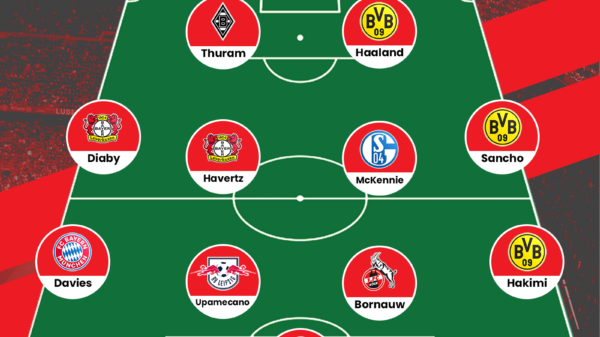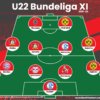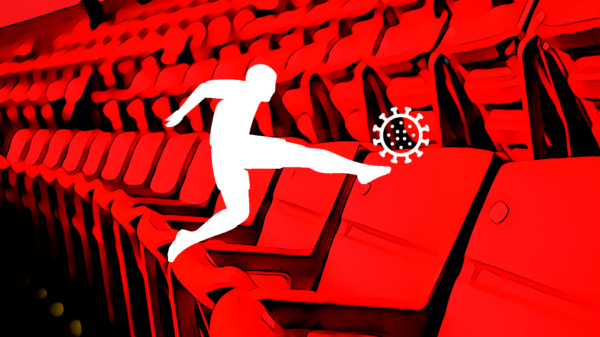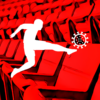Us Aussies are pretty witty when it comes to nicknames. This Sunday, Western Sydney Wanderers will play the Central Coast Mariners, with the winner lifting ‘the Toilet Seat’; two stars of the occasion will be ‘Popa Guardiola’ (Tony Popovic, the Wanderers’ manager) and ZlatDan McBreenovic (Daniel McBreen, Central Coast’s and the A-League’s top-scorer).
But perhaps the best nickname is given to Marco Rojas, dubbed the ‘Kiwi Messi’. Whilst all of these nicknames are drastically overstating their abilities, Marco Rojas is a special young player with a bright future ahead of him.
So what do we know of him? Marco Rojas has had a prolific 2012/13 A-League season, scoring 15 goals and providing 8 assists in his 26 appearances. He is now one of the hottest properties going around, announcing he won’t be re-signing with Melbourne Victory, and is instead weighing up his European offers. So let’s learn a little bit more about him.
Profile
Starting out his playing days in Waikato, Rojas certainly had a unique path to becoming a professional footballer. Spotted by Yellow Fever members (the Wellington Phoenix active supporters group), Rojas was awarded a scholarship which gave him the opportunity of a trial with Wellington. During the pre-season trial, Rojas impressed then-manager Ricki Herbert (and current New Zealand national team head coach) enough to be handed a two-year deal.
His two seasons in Wellington saw him become the hottest talent in New Zealand football. However, he incensed the Phoenix fans, who had given him his big break in professional football, by refusing to extend his contract, instead moving to Melbourne Victory.
His first season in Melbourne was far from spectacular, with club instability, manager changes and a new environment all being mitigating factors. The start of the 2012/13 season saw the appointment of Ange Postecoglou as manager.
Postecoglou’s reputation as an A-League manager is spectacular, having won two Championships and one Premiership in his two seasons as manager of Brisbane Roar, as well as having a run of 36 games undefeated (all of which saw them dubbed ‘Roarcelona’ … I told you Aussies love a good nickname).
Postecolgou’s arrival, and belief in implementing a clearly defined philosophy and playing structure, saw Rojas flourish. Put simply, the team is built in a way that suited Rojas perfectly.
Rojas saw his stellar performances rewarded, taking home the NAB Young Player of the Year Award. But his best achievement was winning the Johnny Warren Medal, awarded to the best player in the competition, receiving 908 votes, more than double the votes of the second highest player – none other than Alessandro Del Piero.
Styles, Strengths & Weaknesses
As mentioned, Rojas flourished under the tutelage of Ange Postecoglou. To best understand what makes him good, and conversely what he lacks, an understanding of Melbourne Victory’s system is key.
Victory play a predominately counter-attacking game, with a ‘False Nine’ or, sometimes, even two. In that system, Rojas was stationed on the wing (most frequently on the right, but more than willing to switch if needed).
Once possession is regained, Victory move the ball through the lines with lightening pace. The ‘False Nine’ drops off the forward line, drawing out opposition defenders and Rojas and his wide forward partner move in behind to receive a through pass.
The pace and coordinated movement of the wide forwards, especially of Rojas, frequently left the defence for dead. Once they received the ball, Rojas and the other wide forward would then converge, combine and finish, with deadly efficiency.
Rojas’s strengths, of pace and trickery have been maximised by a simple, yet deadly structure.

This time, Melbourne play with two ‘False Nines’ (or what is referred to as ‘Dual 10’s’ by Leopold Method); both come short and the wide forwards again see possession in behind the defence
“When I was in the U-11s and 12s I didn’t get picked for the representative teams because I was too small. I never let it get to me too much because I always wanted to prove them wrong.”
The obvious weakness of Marco Rojas is his size. At 168cm, it could perhaps hinder him in more physical leagues (although the A-League isn’t lacking in physicality). However, as he has shown this season, his pace and technique sufficiently makes up for what he lacks in height.
Just as in what made him so lethal, a major flaw to his game was a direct result of Melbourne Victory’s structure. Ange Postecoglou allowed his wide forwards to ‘cheat’, in fact, he instructed them to stay as high up the pitch as possible – both with and without the ball. This means Rojas rarely, if ever, tracks the opposition fullback’s forward runs. But is it a weakness in a player’s game if the system dictates they don’t track back without the ball?
Despite his early season form, he fell away slightly towards the back end of the season. Injuries suffered by Archie Thompson led to suggestions that Rojas could only shine when Thompson was on the field. Also, as the opponents began to work out effective systems to nullify Melbourne Victory’s counter-attacking prowess, Rojas suffered. As teams sat deeper and restricted the ‘False Nine’s’ ability to see possession in central areas, there was less space for Melbourne to use their attacking patterns.
Whilst Rojas contributed a great deal to the A-League’s equal best attacking team, he could have had many more goals and assists to his name. Melbourne frequently created multiple 1-on-1 situations, or similar clear goal scoring chances – such is the nature of the A-League. In particular, two games come to mind which demonstrate Rojas’s inexperience (not forgetting he is still young): against rivals Sydney FC and in the Elimination Final against Perth Glory.
Against Sydney FC he had four glorious opportunities, but failed to score. Against Perth, in extra-time, he had a 1-on-1 situation where he shot straight at the goalkeeper, failing to get his head up to see Archie Thompson was in a position to tap the ball into an empty net.
In a league with stingy defences and limited opportunities, Rojas may struggle. It is unsurprising that he failed to score against Western Sydney Wanderers and Central Coast Mariners – the two most organised and effective defences in the A-League.
Transfer Situation
“It’s every footballer’s dream to play in Europe and I’m over the moon to be able to say I’m about to live that dream very soon.”
Marco Rojas made these comments in the media recently, confirming his departure from the A-League club, with Europe his likely destination. The precise club remains unknown with Liverpool being heavily linked to the young New Zealand international earlier in the season. Australian media have reported interest from Bundesliga sides Stuttgart & Werder Bremen. Germany has been a destination for players from the region in the past, while the Eredivisie also seems a good fit.
Rojas is still only 21-years-old, and his talent is still raw. A move to a major European league can be massive for the players’ career, at the same time, any decision in haste could be detrimental. The A-League is one of the most competitive leagues in the Asian Football Confederation, and the quality of its football is rarely matched elsewhere in the region. Developing his abilities in the A-League could prove to be a smart move. But a move to Europe is hard to turn down for any player.
Both his father and the Melboure Victory management have also confirmed his departure. It will be interesting to see where the “Kiwi Messi” lands up in the summer.
UPDATE: Marco Rojas joined Stuttgart.
This article was written by Kate Cohen, you can follow her on twitter @Kate_LFC_SFC. You can also find Kate’s writing at leopoldmethod.com.au, a website dedicated to in-depth analysis of Australian football. Follow them on twitter @leopoldmethod.



























































